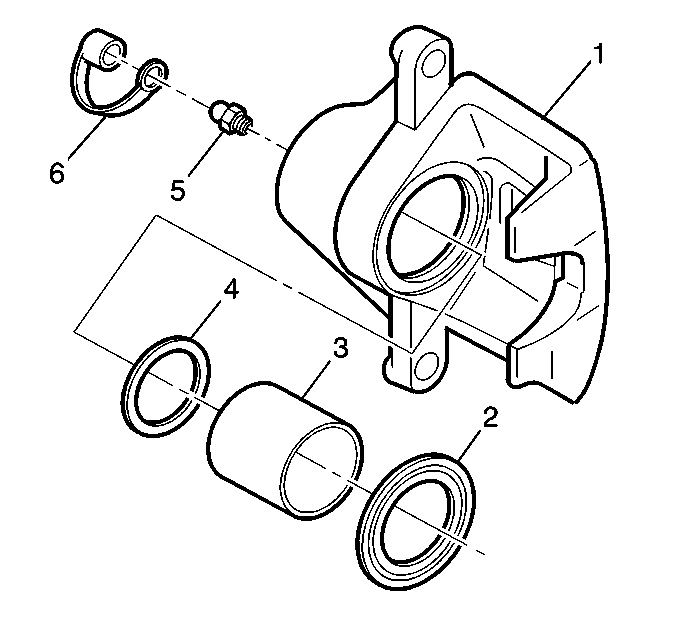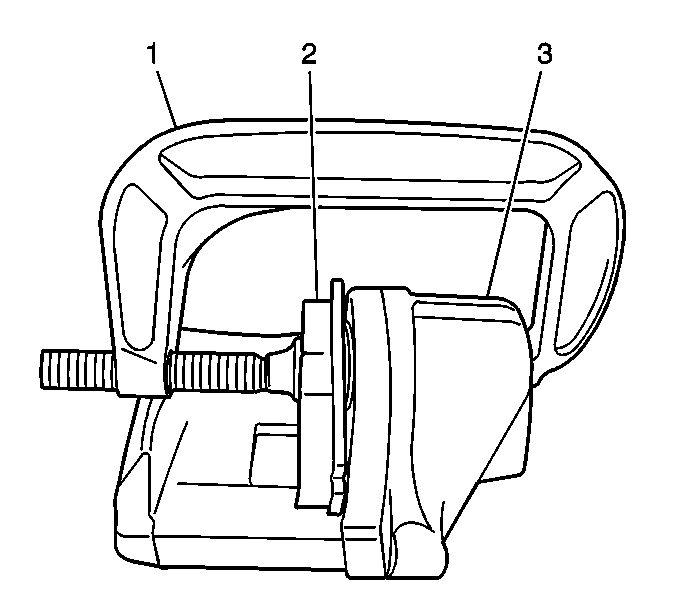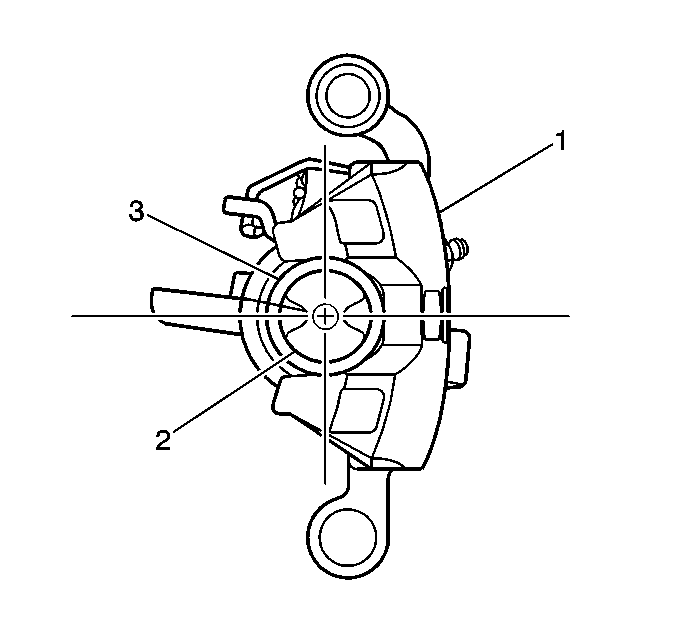For 1990-2009 cars only
- Inspect the brake caliper housing (1) for cracks, excess wear, and/or damage. If any of these conditions are present, the brake caliper requires replacement.
- Inspect the caliper piston dust boot seal (2) for cracks, tears, cuts, deterioration and/or improper seating in the caliper body. If any of these conditions are present, the brake caliper requires overhaul or replacement.
- Inspect for brake fluid leakage around the caliper piston dust boot seal (2) and on the disc brake pads. If there is any evidence of brake fluid leakage, the brake caliper requires overhaul or replacement.
- Inspect for smooth and complete travel of the caliper pistons into the caliper bores:
- For front caliper applications insert a discarded inner brake pad (2) or a block of wood in front of the piston. Using a large C-clamp (1) installed over the body of the caliper (3) and against the brake pad or block of wood , slowly bottom the piston on the bore.
- For rear applications, retract the brake caliper piston (2) into the brake caliper bore utilizing a suitable spanner-type tool and fully bottoming out the piston by turning clockwise using the MAC®Tools DBC 2500 MA Disc Brake Caliper Tool Set or equivalent.
Caution: Refer to Brake Dust Caution in the Preface section.

The movement of the caliper pistons into the caliper bores should be smooth and even. If the caliper piston is frozen or difficult to bottom, the caliper requires overhaul or replacement.


